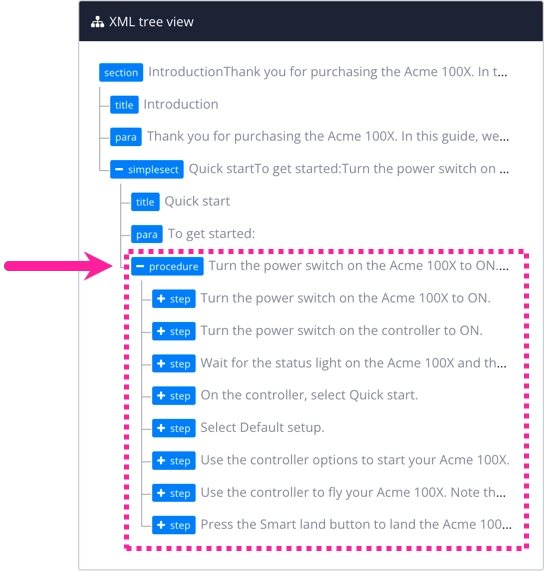Move Elements
Being able to move content quickly is one of the benefits of structured authoring in Paligo. When you move a block element, you move the selected element and all of its “child” elements too. A good example is a procedure, where if you move the procedure element, you move the procedure element and all of its “child” step and para elements in one action.

There are several ways to move block elements:
Tip
It's worth taking the time to learn the Keyboard Shortcuts. When you master those, you will be able to move your block elements around very quickly.
When you are moving block elements, it's important to note that you can only move an element up or down at the same level in the overall topic structure. This is by design, as it ensures that you do not move elements into positions where they are not allowed. For example, you can move a step up or down in the procedure order, but you cannot move the step outside of the procedure.
To learn about the parent-child relationship and how it affects moving, copying and deleting, see Parent and child relationships in structured content.
Note
Tables behave differently to other block elements, due to their structure and commonly expected behavior. To learn about moving elements in a table, see Move Row or Column.